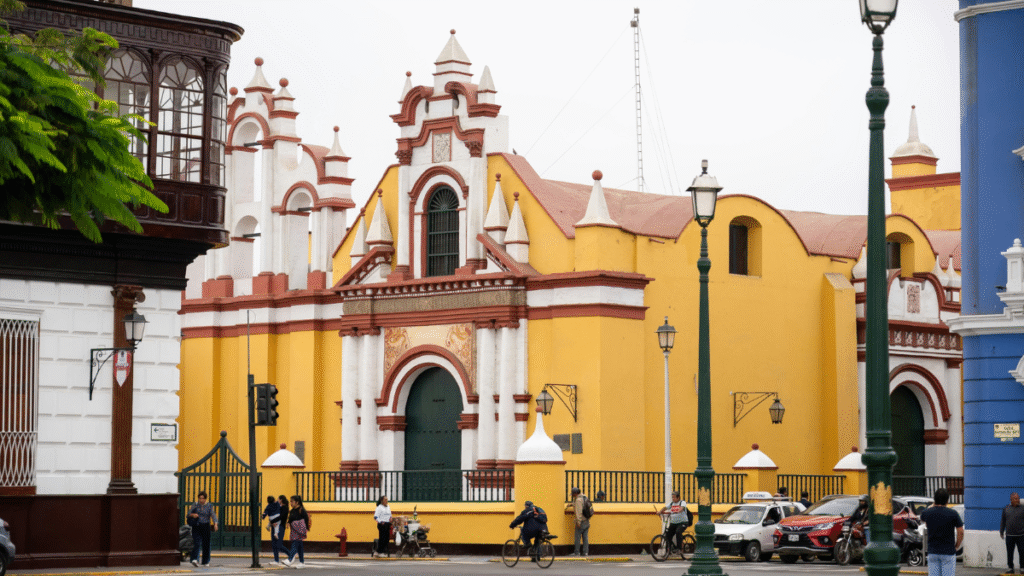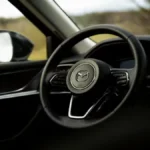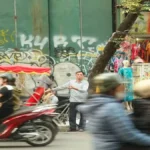Maudach is more than a name on a map; it is a living district with roots stretching back centuries, a place where history, culture, and everyday life intertwine. Situated within Ludwigshafen am Rhein in Germany’s Rhineland-Palatinate region, Maudach has evolved from a modest agricultural village into a vibrant community that reflects both tradition and modernity. For those seeking to understand its significance—whether in terms of heritage, nature, or economy—Maudach offers a multifaceted story that continues to unfold.
In this article, we will delve into Maudach’s layered history, its cultural identity, the natural environment that shapes local life, and the ways in which the district has adapted to contemporary challenges. For new visitors, curious readers, and even long-time residents, this exploration provides fresh perspectives on what makes Maudach distinctive.
The Historical Roots of Maudach
Maudach’s earliest known references date back to medieval times, with its name believed to be derived from old Germanic words linked to water and settlement. This makes sense, given the district’s proximity to the Rhine and the fertile lands that encouraged farming.
Throughout much of its history, Maudach was a rural community centered on agriculture, particularly grain, vegetables, and wine. Farmers worked fields that stretched across the plain, benefiting from the rich soils of the Rhine valley. Until the 19th century, the rhythm of life was tied almost exclusively to the land, with seasonal cycles of planting, harvest, and market trade.
The Napoleonic era and later incorporation into Bavaria in the early 19th century reshaped administrative structures. Maudach retained its village character but gained closer ties to larger towns in the region. By the late 1800s, the growing industrialization of Ludwigshafen began to affect Maudach, as residents found employment in nearby factories while maintaining small farms.
Integration into Ludwigshafen
In 1938, Maudach was officially incorporated into Ludwigshafen am Rhein. This marked a turning point: the district was no longer an independent municipality but part of a rapidly industrializing city.
The integration brought both challenges and opportunities. On one hand, Maudach gained infrastructure improvements, including better roads, schools, and utilities. On the other hand, the district had to adjust to being part of a much larger urban system, where local identity risked being overshadowed.
Yet, remarkably, Maudach preserved its character. Even today, residents speak with pride about their village-like atmosphere, where neighbors know one another and community ties remain strong despite urban expansion.
Geography and Natural Environment
Maudach lies to the west of Ludwigshafen’s city center, bordering agricultural land and natural reserves. The landscape is a blend of residential neighborhoods, fields, and patches of woodland.
The most prominent natural feature is the Maudacher Bruch, a vast nature reserve that covers more than 500 hectares. This wetland area, once used for grazing and farming, is now protected as a sanctuary for wildlife and a recreational space for people.
The reserve includes ponds, meadows, and forested areas, offering habitats for migratory birds, amphibians, and rare plants. Walking trails allow residents and visitors to enjoy the seasonal changes: spring blossoms, summer greenery, autumn foliage, and the quiet beauty of winter.
Table: Key Facts about Maudach
| Aspect | Details |
|---|---|
| Location | District of Ludwigshafen am Rhein, Rhineland-Palatinate, Germany |
| Population | Approximately 9,000 residents |
| Historical Origin | First mentioned in medieval records; incorporated into Ludwigshafen 1938 |
| Notable Landmark | Maudacher Bruch nature reserve |
| Economy | Mix of local businesses, services, and commuting workforce |
| Community Identity | Strong village character within urban context |
Cultural Identity and Community Life
Maudach’s culture is defined by a blend of tradition and modern influences. Annual events such as the Kerwe (village fair) remain central to community life, drawing residents together for food, music, and celebration.
Local clubs and associations also play an important role. Sports clubs, singing groups, and cultural societies provide outlets for social connection. These associations are deeply rooted in the tradition of Rhineland community life, where volunteering and participation strengthen bonds.
Churches—both Catholic and Protestant—remain not just places of worship but also centers for gatherings, charity, and education. Their historic buildings mark the district’s skyline and remind residents of the enduring role of faith in shaping local identity.
Economy and Employment
Economically, Maudach has shifted from agriculture to a service- and commuter-based model. While a few farms remain, most residents now work in nearby Ludwigshafen or Mannheim. The presence of BASF, one of the world’s largest chemical companies, has long influenced employment patterns in the area.
Within Maudach itself, small businesses thrive: bakeries, butcher shops, family-owned restaurants, and retail stores form the backbone of the local economy. These enterprises not only provide goods and services but also foster a sense of familiarity and trust.
In recent years, home-based work and small-scale entrepreneurship have also increased, reflecting broader societal trends. This diversification helps maintain resilience in the face of economic shifts.
Education and Infrastructure
Maudach offers essential educational facilities, including primary schools and kindergartens. For secondary and higher education, students often travel to Ludwigshafen’s city center or nearby Mannheim.
Public transport links connect Maudach to the wider region, though many residents rely on cars. Cycling is also popular, particularly with well-maintained routes leading into the Maudacher Bruch and surrounding neighborhoods.
Infrastructure projects over the past two decades have improved roads, utilities, and public spaces. Yet, like many districts balancing growth with heritage, debates continue over how much development should be allowed without eroding the community’s village-like feel.
The Role of the Maudacher Bruch
The Maudacher Bruch deserves special attention. Once seen as a marginal wetland, it is now recognized as an ecological jewel. Its biodiversity has drawn attention from conservationists, and local authorities have invested in preserving habitats while making the area accessible for recreation.
Residents use the Bruch as a retreat from urban life. Joggers, cyclists, birdwatchers, and families with children all find space here. Seasonal festivals occasionally highlight the area, raising awareness of environmental issues while celebrating the beauty of nature.
In many ways, the Bruch symbolizes Maudach itself: resilient, adaptable, and rooted in both history and the natural world.
Social Dynamics and Demographics
With a population of around 9,000, Maudach is large enough to sustain diverse activities but small enough to preserve familiarity. Generational continuity is strong; many families have lived here for decades, sometimes centuries.
In recent years, however, demographic change has introduced new dynamics. Younger families move in, drawn by relatively affordable housing and access to green spaces. At the same time, an aging population shapes local services and community priorities.
Integration of newcomers remains a challenge but also an opportunity. Local associations often serve as bridges, helping new residents feel at home.
Modern Challenges and Opportunities
Like many urban districts with deep historical roots, Maudach faces modern challenges:
- Housing demand: Balancing new development with preservation of community character.
- Traffic: Managing congestion while promoting sustainable mobility.
- Environmental pressures: Protecting the Maudacher Bruch from pollution and overuse.
- Community cohesion: Ensuring generational and cultural integration.
At the same time, opportunities abound. Maudach’s proximity to major economic hubs, coupled with its natural and cultural assets, make it attractive for residents and visitors alike. Sustainable development, digital infrastructure, and expanded cultural initiatives could further strengthen its role within Ludwigshafen.
Maudach in the Larger Context
Understanding Maudach also means seeing it in context with the broader region. Ludwigshafen and Mannheim form part of the Rhine-Neckar metropolitan area, one of Germany’s most dynamic economic zones.
This means Maudach is not isolated. Its residents benefit from access to cultural institutions, universities, and employment opportunities across the metropolitan area. Yet, Maudach retains its distinctiveness by preserving its identity as a “village within the city.”
Looking Ahead: The Future of Maudach
What will Maudach look like in 20 or 30 years? Much depends on how it manages growth.
If housing development respects community scale, if nature reserves remain protected, and if local traditions continue to be celebrated, Maudach will likely thrive as both a historic district and a modern residential area.
Efforts to involve residents in planning, promote sustainability, and preserve cultural identity will be key. Already, grassroots initiatives demonstrate how local engagement can shape the future: from neighborhood gardening projects to cultural festivals highlighting diversity.
FAQs About Maudach
1. Where exactly is Maudach located?
Maudach is a district of Ludwigshafen am Rhein, situated in Rhineland-Palatinate, Germany, near the Rhine River.
2. What is the Maudacher Bruch?
The Maudacher Bruch is a large nature reserve near Maudach, known for its wetlands, biodiversity, and recreational trails.
3. Is Maudach still a village?
Historically a village, Maudach has been part of Ludwigshafen since 1938, but it retains a strong village character.
4. What are the main community events in Maudach?
The annual Kerwe (fair), local sports events, and cultural gatherings organized by associations are key highlights.
5. Why is Maudach significant for visitors?
Maudach offers a unique mix of history, culture, and nature—especially the Maudacher Bruch—making it appealing for visitors.
Conclusion
Maudach is a place where history and modernity coexist, where the fields of the past meet the demands of the present, and where a strong sense of identity persists despite urban pressures. From the Maudacher Bruch to the annual Kerwe, from small shops to family homes, every detail contributes to the larger mosaic of life here.
For readers exploring the district for the first time, Maudach offers lessons in resilience, tradition, and community spirit. For longtime residents, it is a reminder of the richness that lies in the familiar. Ultimately, Maudach is not only a district of Ludwigshafen but also a story of how local identity endures in an interconnected world.







